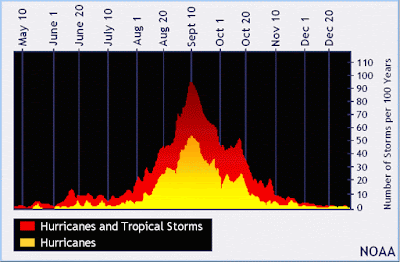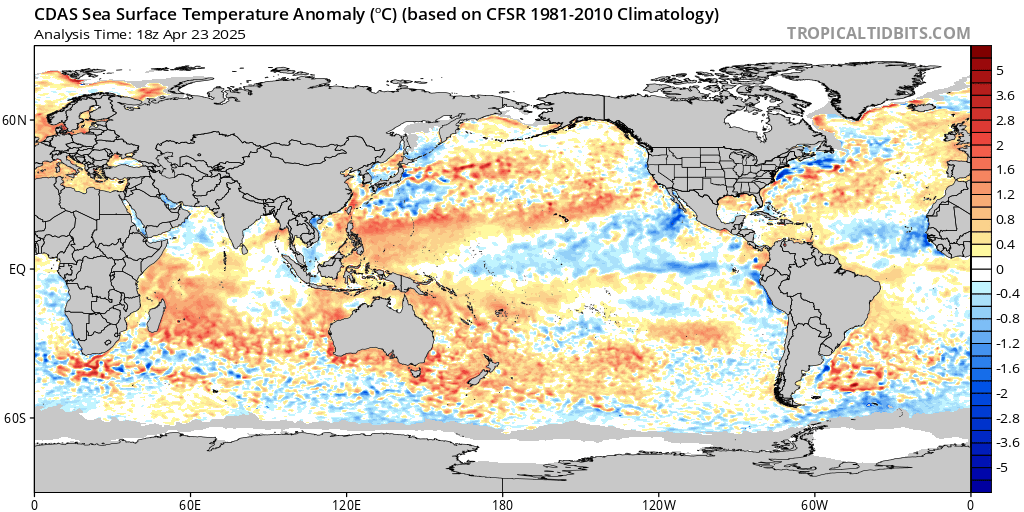 |
| Cartoon credit: Wisconsin State Journal |
Relentless. Destructive. Devastating. Catastrophic.
These are just some of the many adjectives used to describe the endless barrage of hurricanes that have directly impacted the United States in the past few months.
 |
| Hurricane Harvey - Photo Credit: GOES-16/NASA |
Hurricane Harvey (August 25 - September 3) struck the coast of Texas on August 25, bringing damaging category four strength winds and record-setting rainfall totals to the Houston-metropolitan area. Harvey was officially the first major hurricane (category three strength or higher) to make landfall in the United States since Hurricane Wilma did so 12 years ago in 2005. It seemed just as Harvey moved its way out of the southeast Texas area, leaving billions of dollars in damage in its wake, everyone's focus shifted to the next tropical system brewing off of the coast of Africa.
 |
| Hurricane Irma - Photo Credit: USA Today |
Hurricane Irma (August 30 - September 16) surely made a name for itself in its own right, smashing numerous records and wreaking havoc wherever its path took it. Perhaps the most striking statistics about Irma was how strong it was and for how long it was this powerful. It tied the record for the longest time as a category five hurricane and it now holds the record for sustaining it's maximum wind speeds of 185 mph for an incredible 37 hours. The first land mass in the path of Irma was a tiny island in the far northeastern part of the Leeward Islands named Barbuda. This is when we saw the true power of this system, as Irma demolished over 90 percent of the buildings and vehicles on the island, before impacting other islands in the Caribbean on its way towards the U.S. mainland. Irma made landfall as a category four hurricane on the Florida Keys on September 10 and impacted the entire state of Florida with flooding and damaging winds.
 |
| Hurricane Maria - Photo Credit: FiveThirtyEight |
Once Hurricane Irma dissipated, Hurricane Maria (September 16 - October 3) quickly took its place in the Atlantic basin. Maria quickly developed into a major hurricane in a matter of days just to the east of the Lesser Antilles. A mere two days after it had formed, Maria struck the small island of Dominica as a category 5 hurricanes with winds up to 175 mph and then marched its way up to the island of Puerto Rico, home to over 3.4 million people and a U.S. territory, where it made landfall has a high-end category four storm. Maria caused catastrophic damage and a major humanitarian crisis in Puerto Rico, and many of President Trump's controversial actions in response to Hurricane Maria are very prevalent in the news today. Maria proceeded to take a turn out to sea, luckily not making landfall on the continental United States.
 |
| Hurricane Nate - Photo Credit: New York Magazine |
However, Mother Nature produced one more storm out of the Gulf of Mexico, Hurricane Nate (October 4 - 11), which impacted parts of Mississippi and Lousiana as a category one hurricane. Even though the impacts of Hurricane Nate were not nearly as widespread as the effects of Harvey, Irma, or Maria, Hurricane Nate was the fourth hurricane to make landfall on the United States or a U.S. territory in the 2017 hurricane season.
All four of these hurricanes made landfall on the continental U.S. or a U.S. territory, while all occurring essentially back-to-back. Looking at the dates when each of these tropical systems formed and dissipated, from August 25 all the way to October 11 there's been a tropical system to talk about in the Atlantic basin that would eventually directly impact the United States.
But what does climate change have to do with all of this? What role did climate change have in making the 2017 hurricane season overly hyperactive and one of the worst on record?
Many scientists realize that it's very hard or even impossible to draw a distinct line between climate change and an individual storm or hurricane. But when looking at the bigger picture, many scientists agree that climate change doesn't create more tropical systems, but that climate change may make the tropical systems that do develop more intense.
 |
| Change in sea surface temperature from 1901 to 2015 - Photo Credit: Environmental Protection Agency |
This is because climate change causes ocean temperatures and sea levels to gradually rise. Since hurricanes feed off of the energy from warm sea surface temperatures, warmer waters mean that hurricanes have more energy to take in and use to intensify. Additionally, since hurricanes usually generate a great deal of storm surge, where ocean water is pushed on-shore due to the winds of the hurricane, higher sea levels can exacerbate this issue, causing higher levels of storm surge and worse flooding.
 |
| 2017 Tropical Storm and Hurricane Tracks - Photo Credit: Wikipedia |
When looking at the 2017 hurricane season in more detail, so far we've had 15 tropical storms and 67%, or 10, of those further intensified into hurricanes. Furthermore, 60% of those 10 hurricanes strengthened into major hurricanes (category three or higher), demonstrating the point that storms will not necessarily be more prevalent, but rather more intense.
Another measurement that meteorologists like to take on hurricanes is the Accumulated Cyclone Energy (ACE), which approximates the wind energy used by a tropical system over its lifetime. The ACE for the 2017 hurricane season was 221, which is the highest since the 2005 hurricane season had an ACE of 250. However, since the 2005 hurricane season had 28 total tropical systems, the ACE per tropical system in 2005 was only about nine compared to about 15 per tropical system during this years hurricane season. This evidence supports the argument that hurricanes are now more intense and stronger than ever, possibly due to the effects of global warming.
 |
| Graph showing when the peak of the hurricane season usually is - Credit: National Hurricane Center |
Even though we've made it past the peak of the hurricane season, which is around September 10, we're not out of the woods in terms of seeing another hurricane develop in the Atlantic before it shuts down for the winter. For instance, we just saw Hurricane Ophelia, now the easternmost Atlantic major hurricane on record, impact Ireland and the United Kingdom with some high winds and rain, so who knows what will come next.
What we do know is that it may be time to put climate change "behind bars" for contributing to one of the worst hurricane seasons ever.

















